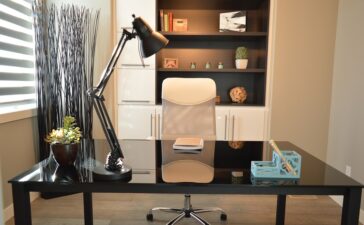When you enter a workspace, do you feel drained or energized? This is a result of workplace design. A well-designed workplace should inspire and motivate employees to perform at their best.
Proper lighting, comfortable chairs, and a clean environment all contribute to a healthy and positive workplace. Cubicles and open-plan offices are common, but privacy is important for some tasks. Consider add-ons like soundproofing or standing desks to cater to individual needs.
Collaboration areas and a designated breakroom can boost camaraderie among employees. But keep in mind that creating a stressful, high-pressure environment may hinder productivity. Providing a welcoming and positive work atmosphere is key.
Organized workspaces also improve productivity. Keep the workspace free of clutter and provide storage solutions. This reduces distractions and helps employees focus on their tasks.
Employers can also consider incorporating foliage or natural elements in the workplace. Not only are they aesthetically pleasing, but research shows that it can reduce stress and increase productivity.
Workplace design plays a significant role in the performance and well-being of employees. Consider the needs of your employees and strive to create a welcoming and organized workspace.









